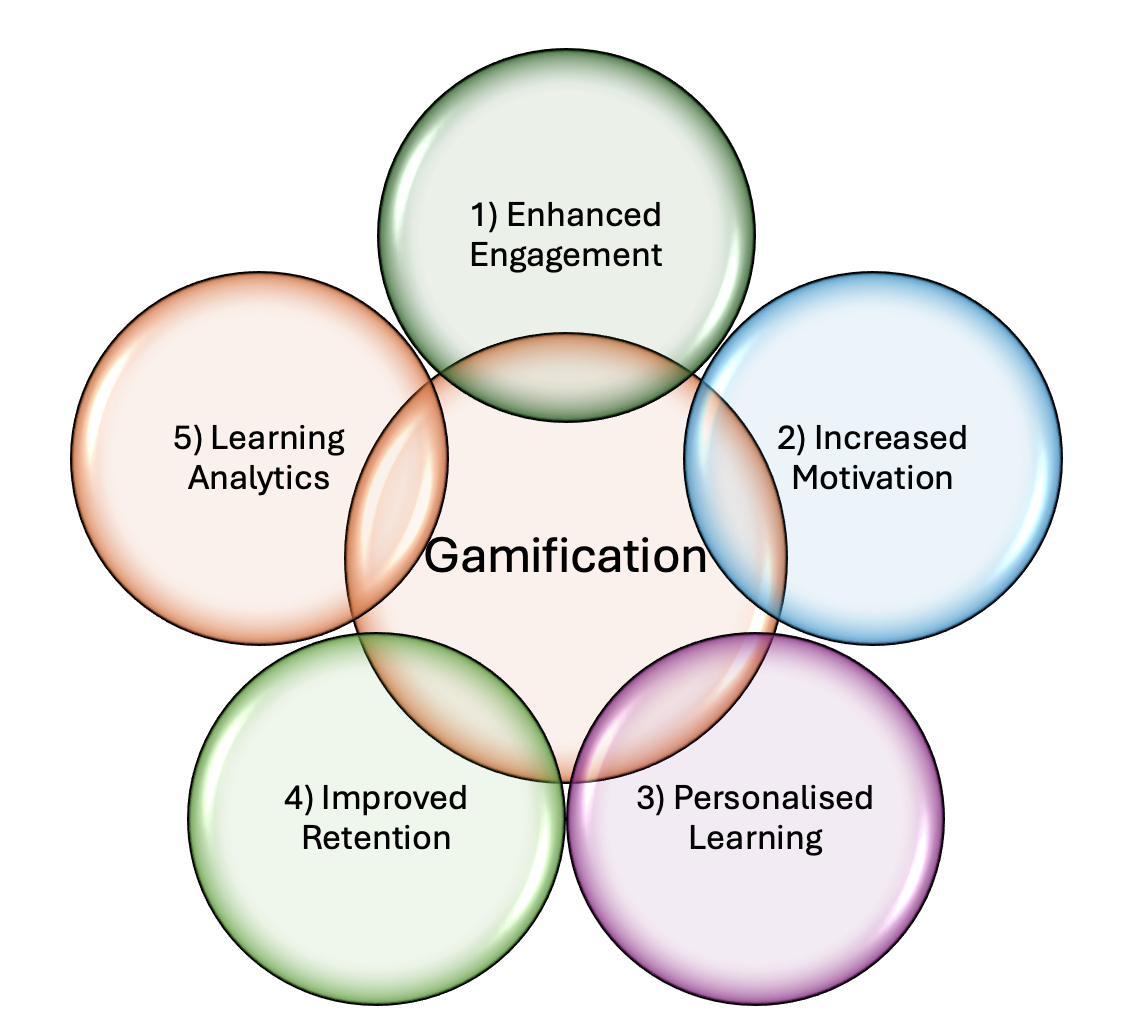
Introduction
As we get older, we often develop the misconception that learning has to be serious and that we must be disciplined in our studies. As a result, we might take ourselves as educators too seriously. Discipline has become a synonym for teaching. We forget that, as children, where our most fundamental learning takes place, we learn through play. This is one of the key benefits of gamification, a strategy that integrates game-based elements and mechanics into educational content to boost engagement, motivation, and recollection. By introducing gaming concepts into our course design and facilitation, we can bring the fun back into learning and improve learning outcomes.
What is Gamification?
According to Wikipedia,
Gamification is the strategic attempt to enhance systems, services, organizations, and activities by creating similar experiences to those experienced when playing games in order to motivate and engage users.
Gamification involves applying game design elements in non-game contexts. This can include points, badges, leaderboards, challenges, and rewards. The goal is to create a more interactive and enjoyable learning experience, encouraging learners to stay motivated and engaged.
Examples of Gamification in Education
- Interactive Quizzes: Embedding quizzes can provide instant feedback and keep learners engaged. For example, after reading a chapter, learners can take a quiz to test their understanding and earn points.
- Badges and Certificates: Awarding badges or certificates for completing modules or achieving high scores can motivate learners to continue their studies. These digital rewards can be shared on social media, adding a layer of social recognition.
- Leaderboards: Introducing leaderboards can create a healthy competitive environment. Learners can see how they rank compared to their peers, which can drive them to improve their performance.
- Story-Based Learning: Creating a narrative around the learning material can make it more engaging. For instance, learners can embark on a virtual journey where they unlock new levels by completing educational tasks.
Some Examples of Gamification Tools
- Quizizz
- Kahoot!
- 9 Free Gamification Tools for an Engaging Classroom, Carla Zipagan
Why Should We Integrate Gamification into Education?

Figure 1: Illustration of five reasons why we should integrate gamification into education.
- Enhanced Engagement: Gamification transforms passive learning into an active experience. By incorporating elements like quizzes, interactive simulations, and challenges, learners are more likely to stay engaged with the material.
- Increased Motivation: Game mechanics such as rewards and achievements provide immediate feedback and a sense of accomplishment, as well as encouraging healthy competitiveness. This can be particularly motivating for learners, supporting them as they progress through the material.
- Improved Retention: As a result of enhanced engagement and increased motivation, learners might be less inclined to drop out of the course. Gamification can be used as a deliberate strategy to decrease drop-out or disengagement in online learning.
- Personalised Learning: Gamification allows for adaptive learning paths. Learners can progress at their own pace, with the system providing challenges that match their skill level.
- Learning Analytics: Gamification can help generate learning data that can be analysed to determine successes or gaps in learning, allowing the teacher to modify their teaching without a formal diagnostic assessment.
Example of Gamification in the AfLIA Openness Course for Librarians
OER Africa developed and piloted a course on Openness for Librarians for the African Library & Information Associations & Institutions (AfLIA). Each week, there was a facilitated Zoom session which involved an interactive quiz covering the content of the previous week. Quizizz was used to design and run the interactive quizzes, which comprised five multiple-choice questions.
Initially designed as a fun activity to recap the learning from the previous week, the interactive quiz quickly revealed very low scores. After further investigating the Moodle analytics, the team discovered that participants had not completed all aspects of the previous week’s activities. The course facilitators quickly adapted and made the instructions more explicit about the various elements within each module that needed to be completed each week.
The following week, the scores were much higher. The immediate results also allowed the facilitators to recap any questions where more than one participant got the answer incorrect, allowing for immediate feedback and correction of the student’s learning. The quizzes continued to be held monthly, with a healthy competitive nature to see who would reach the top of the leaderboard each month. The interactive quizzes improved engagement in the Zoom sessions and helped reduce the weekly drop-out of participants that is often seen in online professional development courses.
Upon successful completion of the course and its requirements, participants received a certificate of completion, which was automated through Moodle. Participants shared these professional-looking certificates on LinkedIn and other social media, tagging OER Africa and AfLIA, creating positive publicity for the course and greater advocacy for the openness movement.
Conclusion
Judicious integration of gamification into learning designs holds great promise for enhancing education across Africa. By making learning more fun, interactive, motivating, and personalised, we can help learners achieve better outcomes and foster a lifelong love for learning.
Acknowledgements
This content was created with the assistance of Microsoft Copilot, 2024
Image courtesy of Lisa Risager, Flickr (CC BY-SA)
Related articles
African Librarians Support the UNESCO OER Recommendation
Three Ways Artificial Intelligence Could Change How We Use Open Educational Resources
